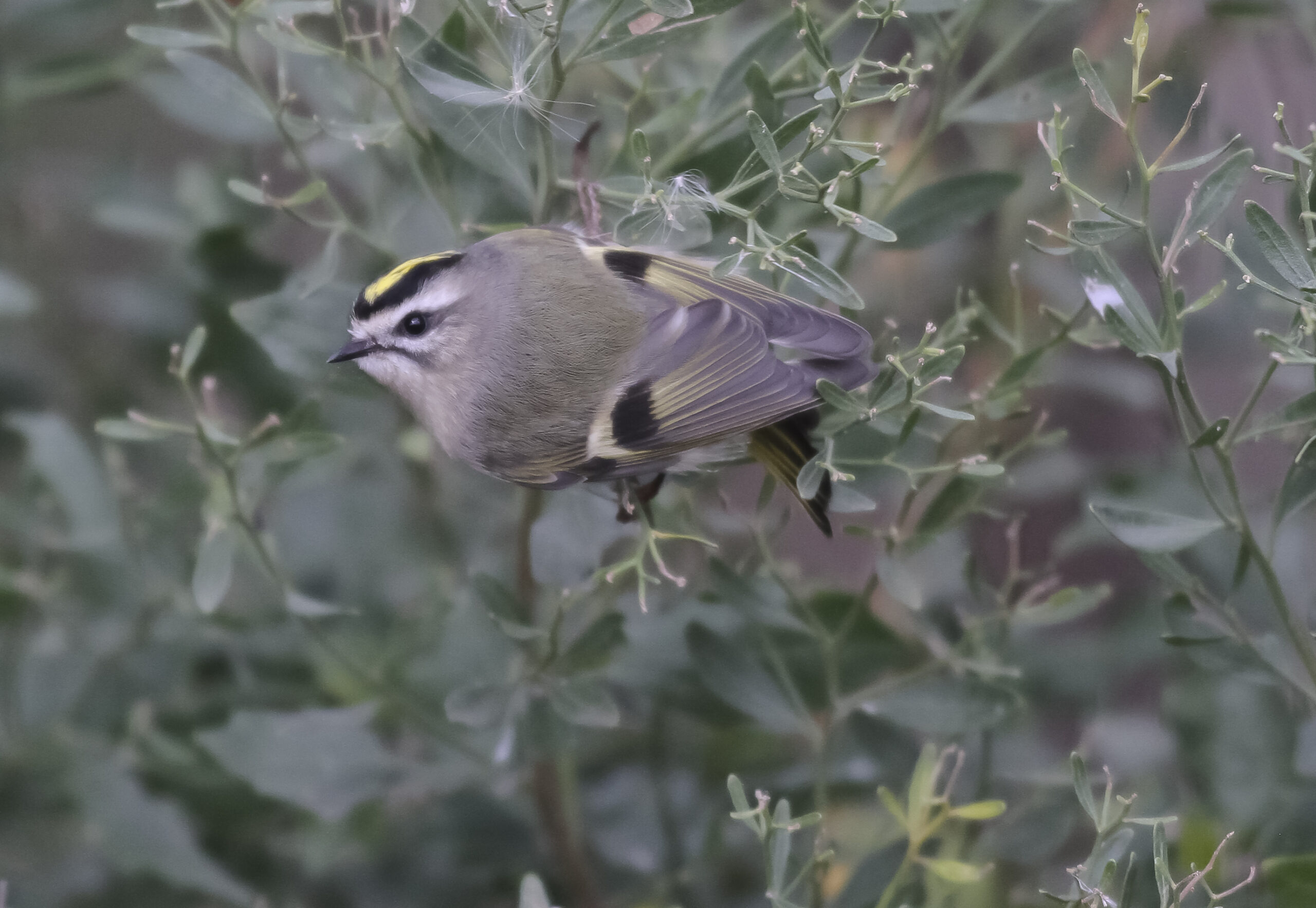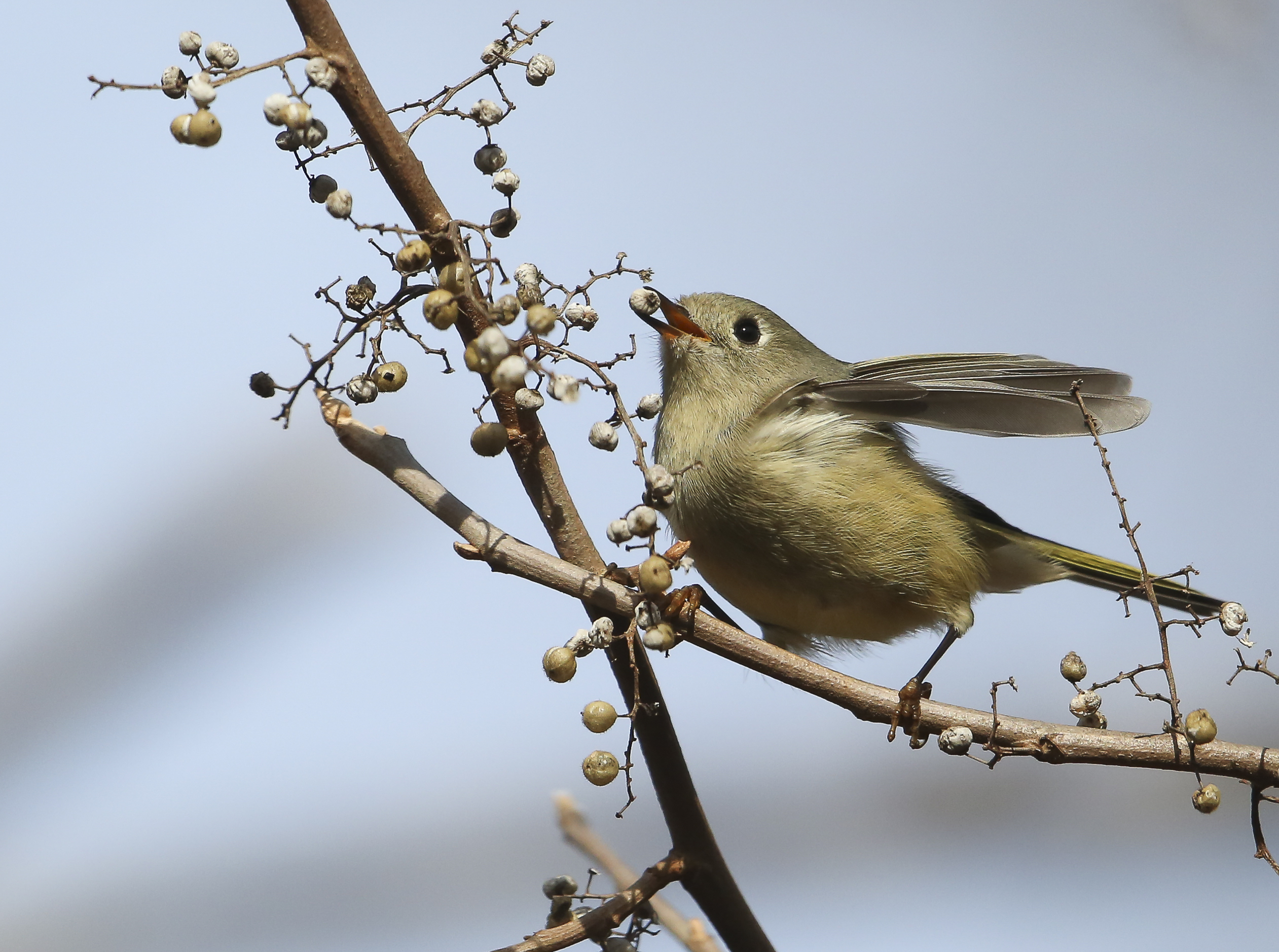Meet the Kinglets




By Wayne Bierbaum
Two years ago in October, I was walking the trails of Beverly Triton Nature Park in Mayo when movement caught my eye and I stopped walking. Tiny little birds were fluttering around a tall bushy tree. It looked like they were examining the underside of each leaf for bugs. They would briefly hover in place and then suddenly dart out as they chased an escaping moth.
The birds chirped and occasionally chased one another. When they chased each other, a flash of bright red color would pop up on their head like an exclamation mark. It’s difficult to photograph an animal that won’t stop moving. The birds were ruby-crowned kinglets.
Two species of kinglets can be found in Maryland. Kinglets are tiny, slightly larger than a hummingbird. On the top of their heads, each has a colorful stripe of feathers that can be raised and puffed up. The golden-crowned kinglet has a bright yellow crown that is always visible between two black stripes but when the bird is angry or displaying its prowess, the yellow crown is raised, and hidden orange feathers puff up. The golden-crowned also has black eyebrows, both black and white wing bars on yellow wings.
The male ruby-crowned kinglet has a patch of red feathers that is hidden until it gets worked up. Then the bright red tuft is raised. They have white wing bars and eye-rings but are otherwise a drab green/brown. Both kinglets are common in our area during fall and spring migrations but can still be found in lower numbers throughout the winter. The ruby-crowned kinglet usually nests farther north and is uncommon in the summer. The golden-crowned kinglet occasionally nests in our area. They are found at higher elevations in the summer
I look for and follow the kinglets during migration periods because their active nature and alertness make them good look-outs for other birds. Larger bird species, especially warblers, will follow the kinglets for protection. The kinglets travel in flocks, staying together by using chipping sounds to communicate. The sounds make them easy to follow even when they are hiding in bushes. In the colder months, I frequently find kinglets around patches of small holly trees; the cup-like leaves seem to hold over-wintering insects. I once left a 10-by-10-foot patch of tomato plants in the ground until mid-November and kinglets came by frequently to look for bugs.
Sometimes a large flock of kinglets will come through and they will seem to be everywhere. I have seen them in downtown Baltimore, the U.S. Naval Academy, and along the beach at Sandy Point.
Their main food sources are insects and spiders but they will eat some berries. I have witnessed ruby-crowned kinglets eating poison ivy berries. They do not usually come to feeders so attracting them to your is difficult. Avoid using outdoor insecticides so that they have some moths or spiders or mosquitoes to eat.
Kinglets are typically unconcerned with humans. If you move slowly, they will let you get very close. They are cute and fun to watch.
